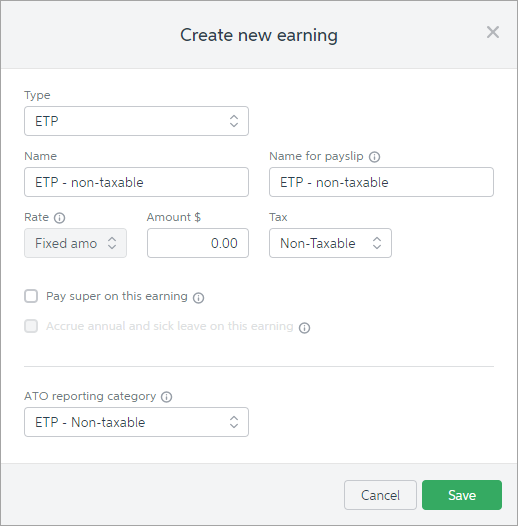Only available to Australian businesses using Single Touch Payroll reporting An employment termination payment (ETP) is a lump sum payment made to an employee because their employment has finished. ETP includes payments for unused rostered days off, payments in lieu of notice, a gratuity or 'golden handshake', and more. For a full list of payments that are and are not ETPs, see the ATO website. | UI Text Box |
|---|
| ETP does not include payments for unused annual leave. For more information on paying out unused annual leave to a terminated employee, see Processing a final pay. |
And because you'll be reporting your ETPs to the ATO with Single Touch Payroll, there's no need to create separate payment summaries for your employees. Just set up your ETP pay items and do a pay run. Easy! 1. Setting up ETP pay items | Anchor |
|---|
| 





 Yes
Yes
 No
No
 Thanks for your feedback.
Thanks for your feedback.